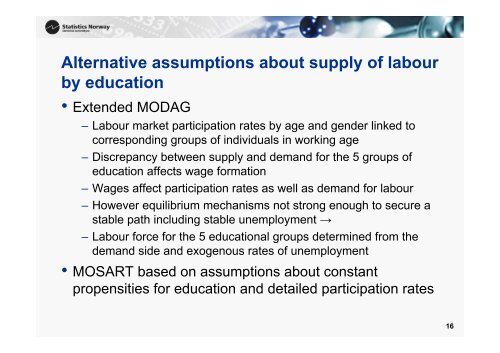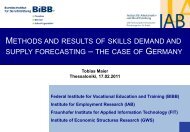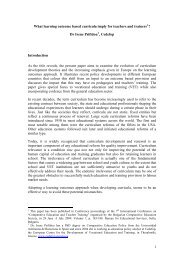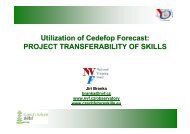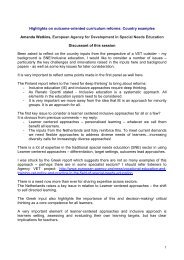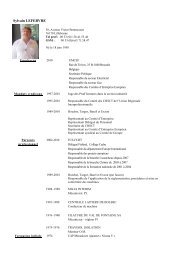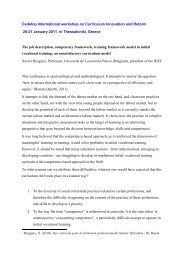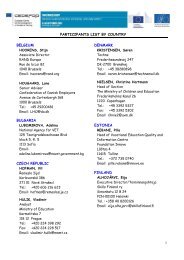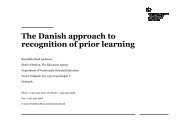Demand and supply of labour by education in Norway towards 2030
Demand and supply of labour by education in Norway towards 2030
Demand and supply of labour by education in Norway towards 2030
You also want an ePaper? Increase the reach of your titles
YUMPU automatically turns print PDFs into web optimized ePapers that Google loves.
Alternative assumptions about <strong>supply</strong> <strong>of</strong> <strong>labour</strong><br />
<strong>by</strong> <strong>education</strong><br />
• Extended MODAG<br />
– Labour market participation rates <strong>by</strong> age <strong>and</strong> gender l<strong>in</strong>ked to<br />
correspond<strong>in</strong>g groups <strong>of</strong> <strong>in</strong>dividuals <strong>in</strong> work<strong>in</strong>g age<br />
– Discrepancy between <strong>supply</strong> <strong>and</strong> dem<strong>and</strong> for the 5 groups <strong>of</strong><br />
<strong>education</strong> affects wage formation<br />
– Wages affect participation rates as well as dem<strong>and</strong> for <strong>labour</strong><br />
– However equilibrium mechanisms not strong enough to secure a<br />
stable path <strong>in</strong>clud<strong>in</strong>g stable unemployment →<br />
– Labour force for the 5 <strong>education</strong>al groups determ<strong>in</strong>ed from the<br />
dem<strong>and</strong> side <strong>and</strong> exogenous rates <strong>of</strong> unemployment<br />
• MOSART based on assumptions about constant<br />
propensities for <strong>education</strong> <strong>and</strong> detailed participation rates<br />
16


